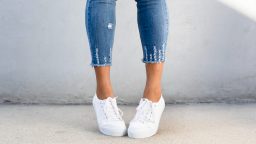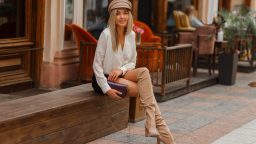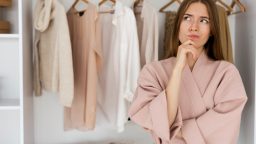Landing a job interview is a big opportunity, and how you present yourself can make a significant impact on the decision-making process. While your qualifications and experience are key factors, the way you dress plays a crucial role in shaping the first impression you make on your potential employer. Dressing appropriately shows that you’re serious about the opportunity and that you respect the company’s culture. So, what should you wear to ensure you impress? Here’s a guide on how to dress for a job interview to make a lasting positive impression.
- Understand the Company Culture
Before you pick out your interview outfit, it’s important to consider the company’s dress code. Every company has its own culture, and what might be considered professional in one industry could be seen as too casual or too formal in another. Research the company to get an idea of their dress style. If you’re unsure, it’s better to lean towards the more formal side, as it’s easier to adjust if necessary.
For example, corporate offices or industries like finance and law often call for a formal approach, while tech startups, creative industries, or retail might have a more relaxed dress code. Tailoring your outfit to the company’s culture will show that you’ve done your homework and that you fit in with the work environment.
- A Well-Fitted Suit
When in doubt, a well-fitted suit is always a safe and professional choice for a job interview. A suit signals that you take the opportunity seriously and are committed to presenting your best self. For men, a tailored suit in neutral colours like black, navy, or grey is ideal. Pair it with a crisp, white shirt and a tie that complements the suit, but avoid overly bold or distracting patterns. Women can opt for a tailored blazer paired with a pencil skirt or trousers, creating a polished and confident look. For women, a simple blouse in a neutral or soft colour can help balance out the suit while remaining professional.
- The Power of a Crisp Shirt
A crisp, well-ironed shirt is an absolute must for any job interview. For men, a white or light blue shirt is classic and appropriate for almost every setting. Ensure the shirt fits well – not too tight and not too loose – as this shows you’ve taken the time to select something that complements your body shape. For women, a well-fitted blouse in a neutral colour or a soft pastel tone works well with a blazer or dress. Avoid shirts that are too low-cut or too bright, as they might detract from your overall appearance.
- Keep Your Footwear Polished
Your shoes should be clean, polished, and appropriate for the outfit. For men, dress shoes like Oxfords, brogues, or loafers in black or brown are ideal. Make sure they are comfortable enough for walking and standing. Women can choose closed-toe pumps or flats, with a medium heel for added elegance without being too high or distracting. Avoid sandals or overly casual shoes, as they don’t project the right level of professionalism. Comfort is key, as you’ll want to feel at ease during your interview without worrying about your footwear.
- Pay Attention to Accessories
Accessories should be kept to a minimum when dressing for a job interview. The goal is to look polished without drawing too much attention to any one item. Men should avoid flashy jewellery, opting instead for a simple watch or cufflinks if necessary. Keep your belt simple and ensure it matches your shoes. Women can choose minimal jewellery such as stud earrings or a delicate necklace, and a simple, functional handbag can complement your outfit. Over-the-top accessories can distract from your professionalism and make you appear less focused on the job at hand.
- Grooming Matters
Good grooming is essential for a job interview. Clean, neat hair and a fresh appearance give off the impression that you are organised and detail-oriented. Make sure your hair is styled in a way that feels comfortable but also professional. If you have facial hair, make sure it’s trimmed and well-groomed. Nails should be clean and trimmed – avoid loud nail polish colours or overly long nails. Fresh breath, a clean shave or neatly styled facial hair, and a light application of makeup (if you wear it) are all important details that help complete your polished look.
- Choose Colours Wisely
Colour can influence how you’re perceived in a job interview, so choose your hues wisely. Neutral tones like black, navy, grey, and beige are safe choices that convey professionalism and authority. Navy, in particular, is a colour that’s often associated with trustworthiness and confidence. If you want to add a pop of colour, do so with small accessories like a tie, scarf, or even your shoes, but avoid wearing overly bright or attention-grabbing colours. Bright reds, oranges, or neon colours might be seen as too bold for more traditional industries.
- Don’t Overdo It with Fragrance
While a nice fragrance can be an added bonus, it’s essential not to overdo it. Strong perfumes or colognes can be overwhelming in an interview setting and may even distract the interviewer. A light spritz of cologne or perfume can help you feel confident, but remember that subtlety is key. You want your skills and experience to be the focal point, not your scent.
- Be Prepared and Be Comfortable
Ultimately, your outfit should make you feel confident and comfortable. An uncomfortable outfit can be distracting and may even affect how you perform in the interview. Choose clothing that fits well, allows you to move freely, and helps you feel like your best self. A job interview is your chance to shine, and the right outfit can help set the stage for a positive impression.
Conclusion
Dressing for a job interview is all about finding the perfect balance between professionalism and personality. A well-chosen outfit that fits the company culture will help you make a strong first impression and show that you’re serious about the role. Whether you opt for a tailored suit or a polished blouse, make sure your clothes are neat, well-fitted, and appropriate for the industry. With the right outfit and a confident attitude, you’ll be ready to impress in your next job interview.





